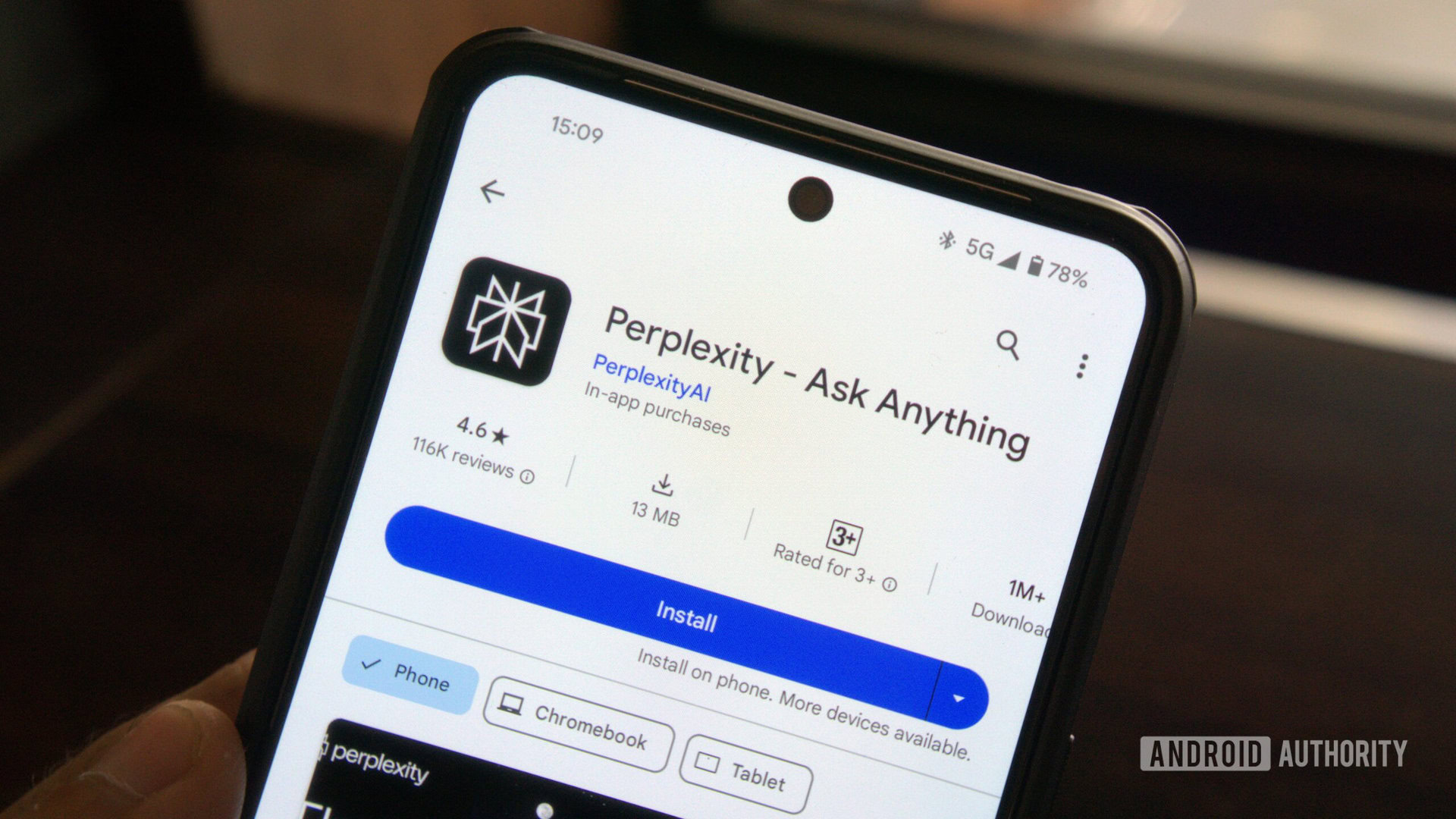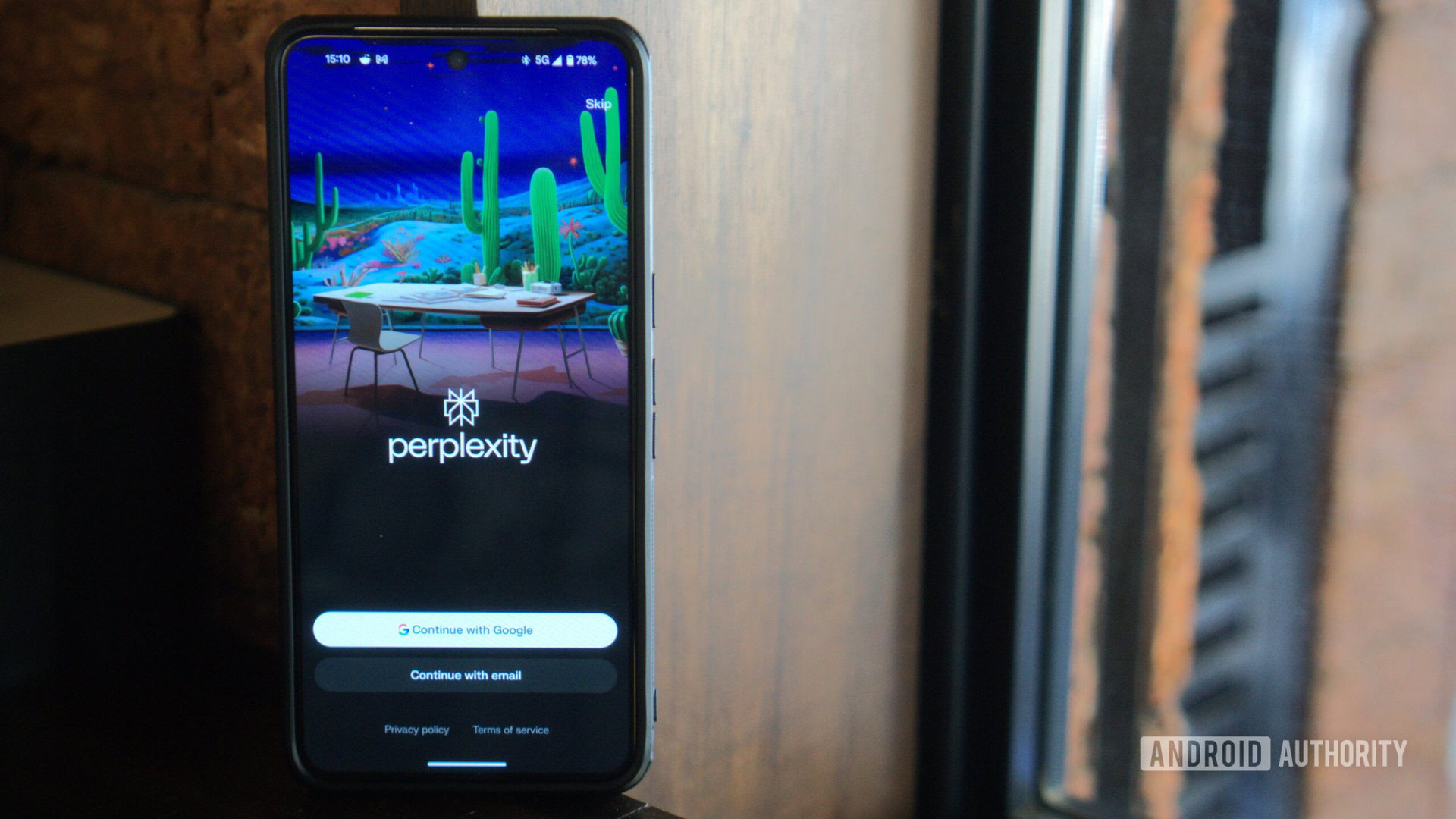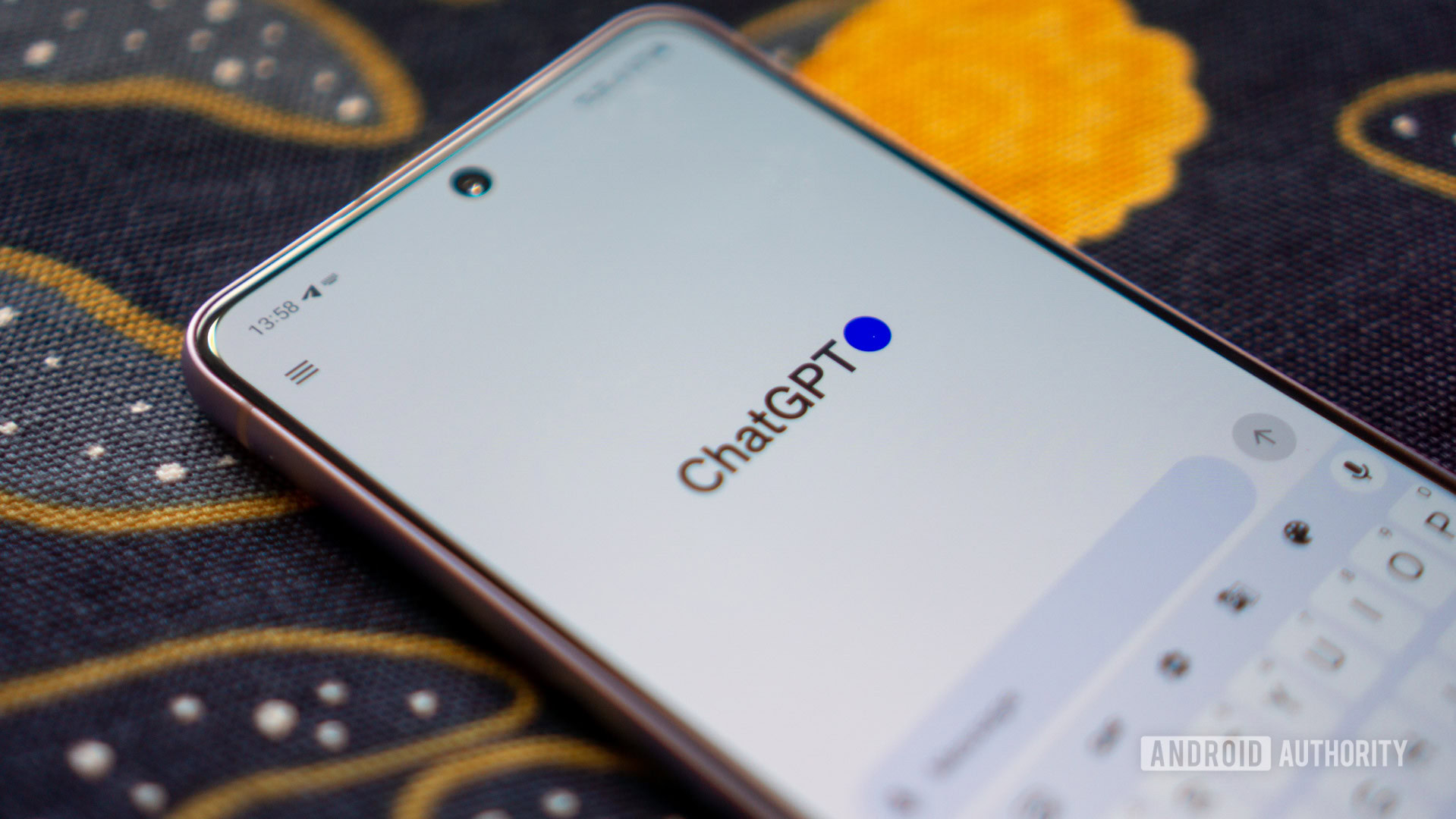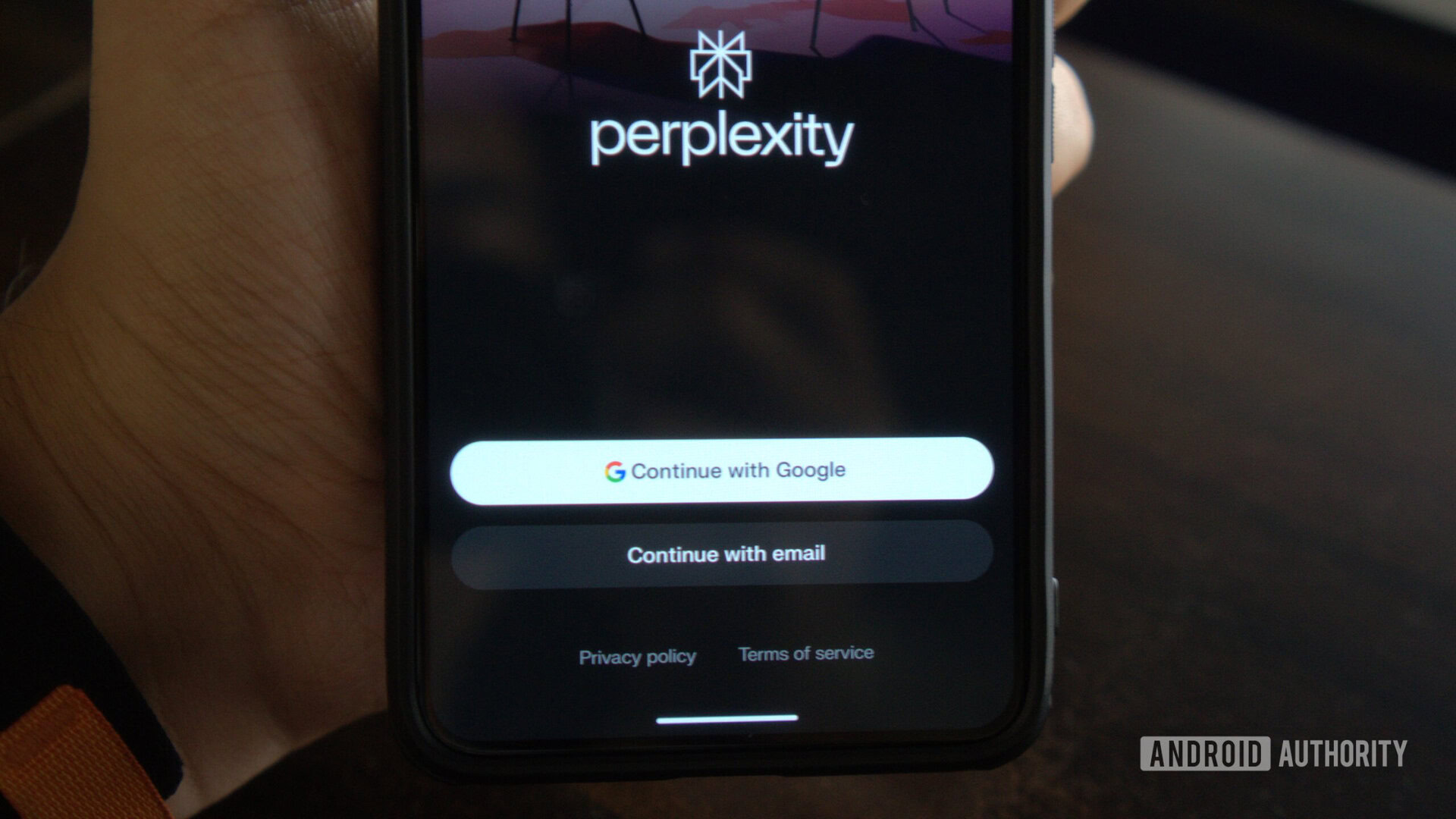Affiliate links on Android Authority may earn us a commission. Learn more.
Perplexity AI: How does it stack up against ChatGPT?
Published onApril 12, 2024

Ever since ChatGPT’s release in late 2022, we’ve become increasingly reliant on generative AI for research and creative tasks. However, modern AI chatbots are notoriously prone to generating inaccurate text, a phenomenon commonly known as “hallucinations”. But a new platform, Perplexity AI, now believes that it has the solution to this long-standing problem of misinformation. Perplexity combines the functionality of traditional search engines like Google with modern conversational AI, even using the same foundation as ChatGPT.
So is Perplexity the most reliable AI available to date, or is it just another ChatGPT competitor riding the hype wave? Let’s find out.
What is Perplexity AI and how does it work?

Perplexity AI bills itself as a conversational alternative to traditional search engines like Google with the ability to understand natural language questions. Compared to other modern chatbots like ChatGPT, Perplexity doesn’t fetch answers from its training data. Instead, it consults a variety of online sources to generate accurate and consistent responses.
Perplexity isn’t the first platform to enlist the help of a search engine to combat misinformation and AI hallucinations. Microsoft was arguably the first to market with Bing Chat, which has since been renamed to Copilot. We also know that Google’s research team arrived at the same conclusion internally, as a LaMDA blog post from 2022 explains. With external sources at their disposal, large language models gain the ability to generate factually accurate responses.
Perplexity references a handful of external sources before answering each prompt.
You may wonder: how does Perplexity differ vs Copilot and Google’s Gemini if all three can search the internet? Simply put, it aims to be a replacement for traditional search engines, providing direct answers with citations to your questions. It’s conversational to an extent, but not as much of a talkative chatbot as the other AI platforms.
In my testing, I have noticed that Perplexity’s responses resemble that of Google’s Search Generative Experience, an AI-powered summary feature available in select countries. However, response length, comprehensiveness, and accuracy can vary quite a bit between AI platforms, as I’ll illustrate in a later section.
All in all, Perplexity AI offers:
- Conversational search results, with an emphasis on quoting sources for each claim or idea.
- The ability to switch between different language models, meaning you don’t have to use the GPT family if you don’t want to.
- Broad informational search or focused in specific areas like Reddit discussions, YouTube videos, academic papers, and Wolfram Alpha.
Perplexity AI vs ChatGPT: What’s the difference?

Perplexity is an AI-powered search engine first and foremost. You can switch over to a “Writing” mode, but its defaults don’t focus on creative text generation like ChatGPT. For every message you send, Perplexity will analyze anywhere between a handful of online sources to over two dozen websites, meaning it generally offers quite comprehensive answers.
By contrast, ChatGPT’s free tier doesn’t hold a candle to Perplexity’s knowledge-seeking ability. Plus, the former has a hard knowledge cut-off of early 2023. The situation only improves if you’re willing to pay $20 monthly for ChatGPT Plus, which allows the chatbot to access online sources. Even so, it won’t always search the internet as thoroughly as Perplexity.
Perplexity also offers a paid subscription that costs $20 monthly or $200 annually. This unlocks Pro Searches, which essentially forces the AI to consult a larger number of online sources. As a Perplexity Pro user, you can also switch to different language models like GPT-4 even those from competing AI companies like Anthropic’s Claude model.
To summarize, here’s a table that showcases Perplexity’s main differences vs ChatGPT:
| ChatGPT (Free) | Perplexity | ChatGPT Plus | Perplexity Pro | |
|---|---|---|---|---|
Language model | ChatGPT (Free) GPT-3.5 | Perplexity GPT-3.5 | ChatGPT Plus GPT-4 | Perplexity Pro GPT-4, Claude, Mistral, others |
Internet access | ChatGPT (Free) No | Perplexity Yes | ChatGPT Plus Yes (optional) | Perplexity Pro Yes |
Response style | ChatGPT (Free) Long, conversational | Perplexity Short, informative | ChatGPT Plus Same as free tier | Perplexity Pro Same as free tier |
Price | ChatGPT (Free) Free | Perplexity Free | ChatGPT Plus $20 monthly | Perplexity Pro $20 monthly, $200 annual |
Free trial available? | ChatGPT (Free) N/A | Perplexity N/A | ChatGPT Plus No | Perplexity Pro Yes, 7 days |
API access | ChatGPT (Free) None | Perplexity None | ChatGPT Plus Sold separately | Perplexity Pro $5 credit each month |
Is Perplexity AI better than ChatGPT?
With the theory out of the way, it’s time to find out if Perplexity AI actually delivers better results than ChatGPT. I sent both chatbots three identical prompts without offering any additional context. Here’s how they responded:
Prompt 1: Why is optical media still so popular and prevalent across Japan?
In our very first prompt, it becomes clear that Perplexity’s search engine nature makes it better suited to answer nuanced questions. Specifically, Perplexity delved into the cultural reasons behind Japan’s love for optical media. ChatGPT, on the other hand, didn’t acknowledge the aging population’s preference for legacy technologies or Japan’s botched transition to the digital era.
Winner: Perplexity
Prompt 2: Plan a five day trip to Osaka in mid-May
Both ChatGPT and Perplexity offer similarly helpful suggestions, even though the latter read through five different sources. ChatGPT’s training data covers the highlights of a popular tourist destination so it doesn’t need to rely on external sources. That said, Perplexity does offer additional tips for my trip, including weather and transit information.
Winner: Tie
Prompt 3: What are the potential health risks of consuming MSG?
The harmful effects of MSG, or lack thereof, have been debated for decades. Both AI platforms delivered an accurate answer, ultimately assuring us that MSG is safe for consumption in small amounts. But only Perplexity could offer verifiable sources to back up its claims, with links at the top and embedded in-text. If this was a question I had no prior knowledge about, Perplexity would definitely allay my concerns better than ChatGPT.
Winner: Slight edge to Perplexity
Who owns Perplexity AI, is it safe, and can I invest in it?

Similar to Midjourney and a handful of other AI platforms, Perplexity is the product of a small San Francisco-based AI startup. The company’s current CEO, Aravind Srinivas, worked at OpenAI before starting his own venture, alongside three other co-founders.
Perplexity has attracted over $73 million in funding from tech heavyweights like Institutional Venture Partners (IVP), chipmaker Nvidia, and Amazon founder Jeff Bezos. While that may sound like a small amount in comparison to OpenAI’s explosive $17 billion investment to date, Perplexity doesn’t plan to develop or train its own AI models to a similar extent. Not to mention, the company has only existed since 2022 so it has a healthy valuation for its age.
With its ex-OpenAI leadership and strong financial backing, Perplexity is about as safe to use as any other established AI chatbot. However, it’s still a private company so you won’t be able to find it on the stock market and you cannot invest in it as an individual. For that, it would have to launch an initial public offering (IPO), an event that typically takes place several years into a company’s lifecycle.
FAQs
No, Perplexity uses the GPT family of language models but you can also pick from a variety of alternatives such as Claude and Mistral on the Pro tier.
You cannot use ChatGPT 4 or the GPT-4 language model for free on Perplexity. You’ll need to pay $20 per month for the Pro subscription to unlock GPT-4.
Perplexity is not a language model so it’s not better than GPT-4. Instead, it uses GPT-4 as a foundation and builds on top of it.